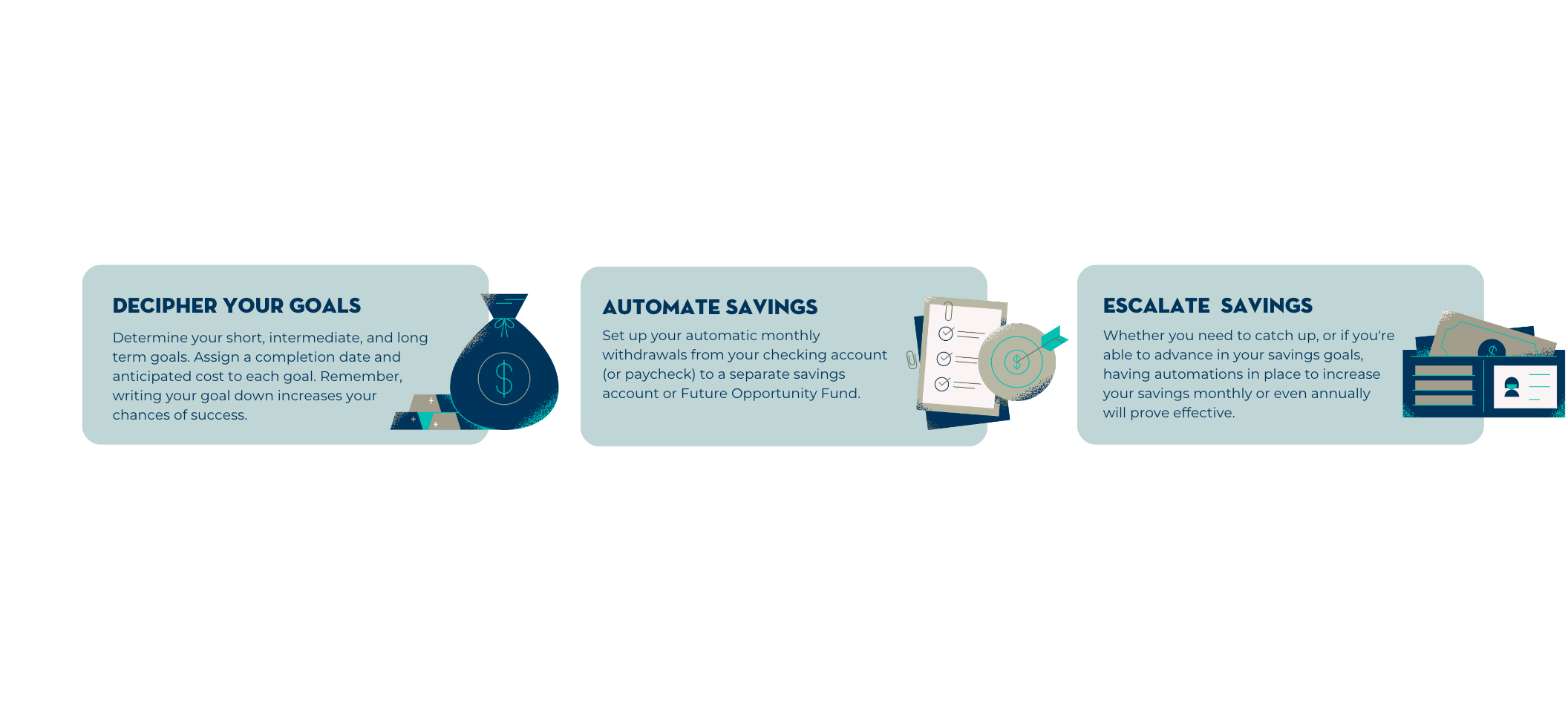Reverse Budgeting, Less Thinking and More Automating
Less Thought and More Automation
Creating a budget and maintaining it is not a task for the faint of heart. Oftentimes, budgeting feels time-consuming and restrictive. Traditional budgeting forces decision-making as if you are a programmable spreadsheet. Rather than focusing on month-to-month expenses and spreadsheet formulas, let’s focus on long-term savings through a process coined “reverse budgeting.”
Reverse budgeting specifies how much you need to save, automates these savings, and allows you to spend the remaining amount of money as you please, without feeling guilty.
In practice, this takes the appearance of funding specified goals on an automated basis. For example, paycheck withdrawals to retirement and savings accounts occur before the cash hits your checking account. Bills, insurance, and debts are paid next. All remaining cash is available for spending or saving (for those of you that are overachievers).
Working Backwards Prevents You From Spending What You Don’t Have
Inherently, increasing the amount saved reduces the amount you have available to spend, but it also forces prioritization for your expenditures. Often, we hear individuals share that their Starbucks habit needs to be kicked to the curb when in reality, it’s the luxury SUV in the driveway... Most people find that as they gradually save more, they cut spending that doesn’t fit their values or priorities.
Most appealing of all, the concept of reverse budgeting requires little maintenance. A traditional budget, whether done in a spreadsheet or a financial app, requires weekly or monthly reconciliation of transactions. Once a reverse budget is decided upon and savings goals are clear, the remainder of the budgeting can easily be automated.
Building Your Reverse Budget
1. Calculate the monthly amount needed to save to reach your goals
Begin by writing your short-term goals (1-2 years or fewer), the date of desired completion, and the expected cost. Writing a goal down vastly increases your chances of success in accomplishing it, and even more so sharing your goal with someone exponentially increases your chances of success. If you’re a client we’ve discussed these goals together, so you already have a built-in accountability partner.
With the expected cost of all your goals combined, you can determine how much is needed to be saved on a monthly basis to achieve each goal within a set timeframe. Once this is calculated, number the goals according to their priority level – now you know where to direct your monthly savings.
Now having your short-term goals in place, you can complete the same exercise for intermediate-term goals (three to five years) as well as long-term goals (five years or more). While it might be challenging to assign a cost to your long-term goals, the benefit of this exercise is to think about it, so input your best guess of what this cost could be. We like using our Future Opportunity Fund concept for intermediate and long-term goals.
If you cannot meet the required monthly savings to achieve your short-term goals, you can escalate your savings over time (see step three), however, this likely is a sign that you need to evaluate what is most important to you and reprioritize accordingly.
2. Set up an automatic monthly withdrawal from your checking account (or directly from your paycheck) to a separate savings account
Automating your finances is the most effective way to maintain your reverse budget.
Begin by opening an online savings account. These accounts are FDIC insured and pay a higher interest rate than your brick-and-mortar bank. We recommend Marcus, Capital One, or Ally. Additionally, an online savings account will be a barrier to impulsive spending since you won’t have a card attached.
Next is arguably the most important step in the process; set up an automatic monthly withdrawal from your checking account (or directly from your paycheck) to the online savings account to reach the amount you calculated as savings in step one. The same thought applies to retirement contributions as well as other savings – if you’re contributing to an employer-sponsored retirement plan this is likely already taking place, however, if you’re contributing to a Traditional or Roth IRA, HSA, 529, etc. it’s in your best interest to automate these contributions too.
The final and best step – is simply to spend the leftover money in your checking account as you see fit. Better yet, should you have cash leftover after spending, invest this! If you’re looking to maximize retirement savings, you can contribute the annual $22,500 to your 401(k) and $6,500 to your Roth IRA (catch-up contributions and phase-out limits might apply). Another possible option, 2023 HSA contribution limits have been increased to $3,850 for self-only coverage and $7,750 for family coverage. HSAs are frequently overlooked when in practice they can be a powerful, tax-advantaged tool.
3. Escalate your savings over time
Escalating your monthly savings is a way to advance towards your ideal monthly savings. This step is powerful for both people who want to multiply their savings as well as those who cannot save the required monthly amount for their short-term goals.
Begin by setting up several automatic withdrawals from your checking (or directly from your paycheck) and deposit these into your online savings account. For this example, the first three months would withdraw $100/month. The second set would withdraw $150/month over the next three months, then $200/month in the next set, and so on.
You can implement this same concept of escalating savings with your 401(k) or other retirement savings vehicle. Begin year one contributing 5%, year two set this to 6%, and so on. The hidden benefit of an escalated savings practice is its ability to intrinsically avoid Lifestyle Creep. Annually your savings will automatically increase, hopefully alongside your salary – avoiding the danger of allowing luxuries to become essentials as your income grows.
Increasing your savings over time becomes more important once you start maxing out your workplace retirement plans. Once you can no longer add to those accounts because of the contributing limits, you will need to allocate savings or investment dollars to other account types to reach your goals.
Bottom Line
Reverse budgeting allows for shame-free spending knowing that you are contributing appropriately to your goals. Short-term goals change from year to year, and long-term goals change as well – it is important to review these goals and automations periodically, however, the heavy lifting is out of your hands. It might be time to stop pretending that you and your spouse are going to budget every Thursday night over a home-cooked meal, and instead, take an hour to check the boxes as you create your reverse budget, then set a calendar reminder for 6-12 months from now to repeat the exercise.
Ashlyn Prom


